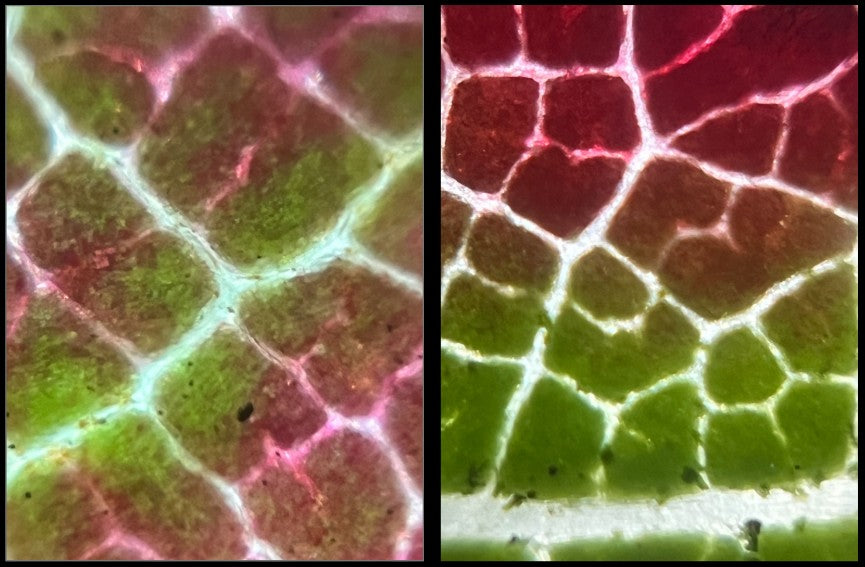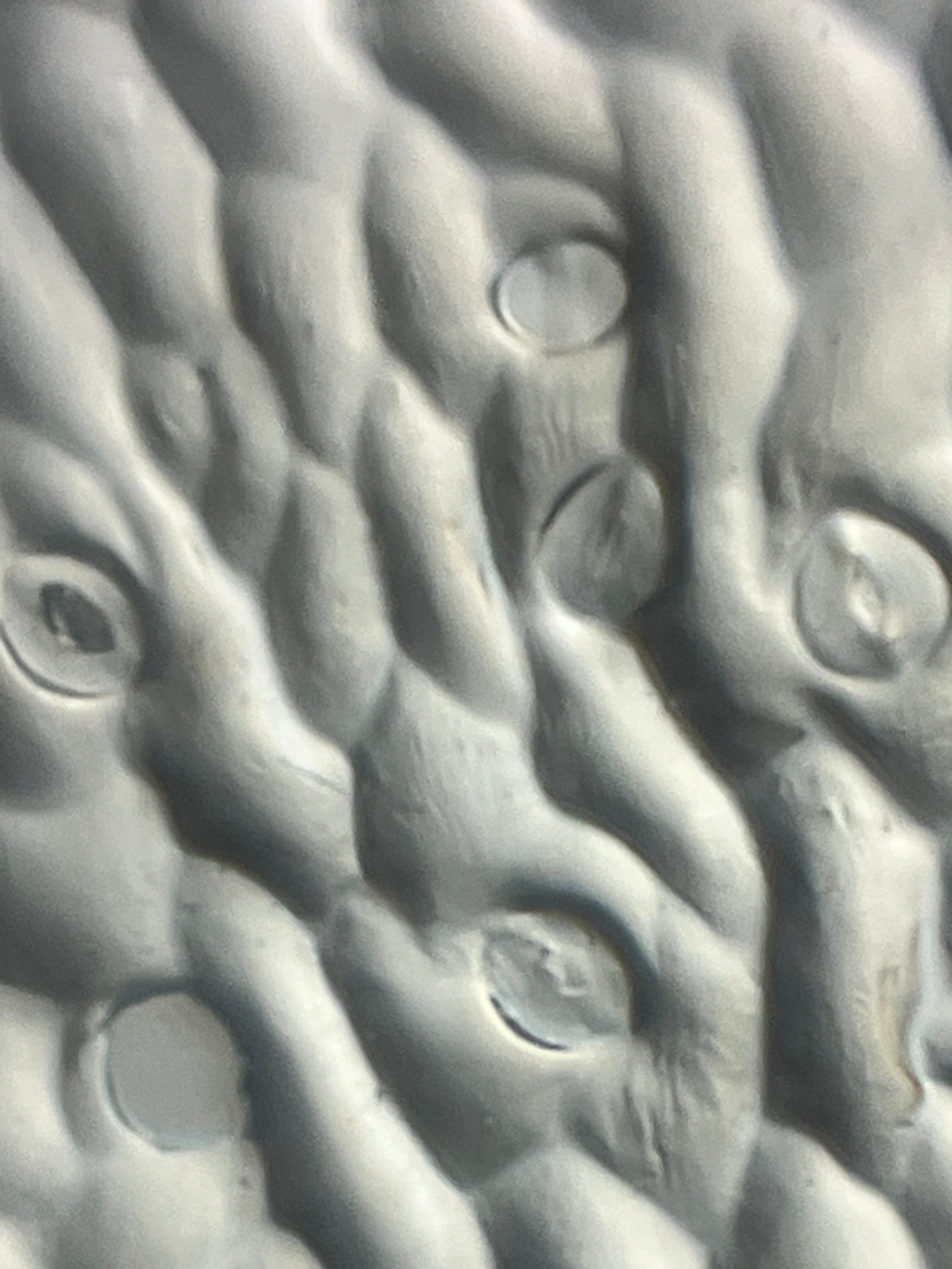Summary:
-
Roots, stems, and leaves are the first visible signs of plant growth in the spring.
-
Research questions can focus on microscopic changes throughout the growing season on a single plant species or plant to plant comparisons.
-
Share your findings and observations on the Microcosmos.
Question Prompt:
What are the structures within roots, stems, and leaves that provide support for early plant growth?
No matter how you choose to address the prompt, you and your students can study the microscopic structures that direct plant growth with a classroom set of Foldscopes.
 Figure 1. Young chamomile plant showing early roots, stem, and leaves in a petri dish.
Figure 1. Young chamomile plant showing early roots, stem, and leaves in a petri dish.
(Photo Credit: Holly A. Stuart)
Background:
The seeds you planted a month ago are stirring. The warmer weather, increase in daylight hours, and water from spring rains are waking them from their cold, dark slumber. The roots, stems, and leaves of a plant are the first signs of life in the spring, emerging from the seed ready to provide physical and nutritional support. Here are some ideas to direct your classroom’s microscopic investigations.
 Figure 2. Montage of root, stem, and leaf microstructures viewed under a Foldscope 2.0
Figure 2. Montage of root, stem, and leaf microstructures viewed under a Foldscope 2.0
(Photo Credit: Holly A. Stuart)
Roots
The root of a plant is underground. The job of the root is to serve as an anchor, find water and minerals in the soil, and connect with the soil microbiome community. Plant roots start off very small and thin. As the roots get longer, root hairs grow along their edges and dig into tiny spaces within the soil. Your class can investigate the density of root hairs, rate of root hair growth, or compare and contrast the root hairs of different plant species.
 Figure 3. Carrot (left) and chamomile (middle) roots viewed under a Foldscope 2.0 at 140X magnification plus 5X digital zoom on phone, and carrot root hairs (right) viewed under a Foldscope 2.0 at 340X magnification plus 5X digital zoom on phone
Figure 3. Carrot (left) and chamomile (middle) roots viewed under a Foldscope 2.0 at 140X magnification plus 5X digital zoom on phone, and carrot root hairs (right) viewed under a Foldscope 2.0 at 340X magnification plus 5X digital zoom on phone
(Photo Credit: Holly A. Stuart)
Stems
The stem lifts the plant out of the ground, allowing it to reach for the sun. The vascular system, which runs up the length of the stem, is responsible for the distribution of water, nutrients, and minerals throughout the plant. Students can study the size and shape of the cells in the plant stem. They can also compare the cells of different plants or monitor how the cells change as the plant grows.
 Figure 4. Longitudinal section of a chamomile stem viewed under a Foldscope 2.0 at 140X magnification plus 5X digital zoom on phone
Figure 4. Longitudinal section of a chamomile stem viewed under a Foldscope 2.0 at 140X magnification plus 5X digital zoom on phone
(Photo Credit: Holly A. Stuart)
Leaves
Leaves are responsible for photosynthesis. This is where sunlight, carbon dioxide, and water get converted to sugar and oxygen. The microscopic structures where carbon dioxide and water vapor enter the leaves are called stomata. Stomata provide a wealth of possibilities for Foldscope research. Your class can look for trends in stomata size, shape, and density throughout the growing season or the percentage of open and closed stomata during different times of day or weather conditions.
 Figure 5. Arugula and green bean stomata viewed under a Foldscope 2.0 at 340X magnification plus 5X digital zoom on phone
Figure 5. Arugula and green bean stomata viewed under a Foldscope 2.0 at 340X magnification plus 5X digital zoom on phone
(Photo Credit: Holly A. Stuart)
Bonus Soil Study!
If you recorded observations of the soil microbiome a few months ago when your garden was new, now is a great time to revisit the soil. Do you have new microbes in your soil? Have the existing microbial populations grown or become more active? Creating graphs to document this data is a great way to track the microscopic changes in your garden throughout the growing season. And it is great for year over year studies too!
Connect:
Remember, these are only suggestions to guide you along your garden study. What questions do your students want to answer? What plants are growing in your garden now? Let us know! Share your observations, discoveries, and pictures with the Foldscope community on the Microcosmos. Your contributions will build up a strong scientific database that can help support new and innovative scientific research. Tag us on social media, too. We love to see how Foldscopers around the world are using their Foldscopes in new and innovative ways!
Next month we’ll look at flowers and pollinators in the garden. Until then, happy gardening and Foldscoping!
 Figure 6. Lavender flowers with a bee pollinator!
Figure 6. Lavender flowers with a bee pollinator!
(Photo Credit: Holly A. Stuart)
Facebook: @Foldscope
Instagram: @teamfoldscope
Blue Sky: @teamfoldscope.bsky.social
TikTok: @foldscope
Threads: @teamfoldscope
Twitter: @TeamFoldscope



